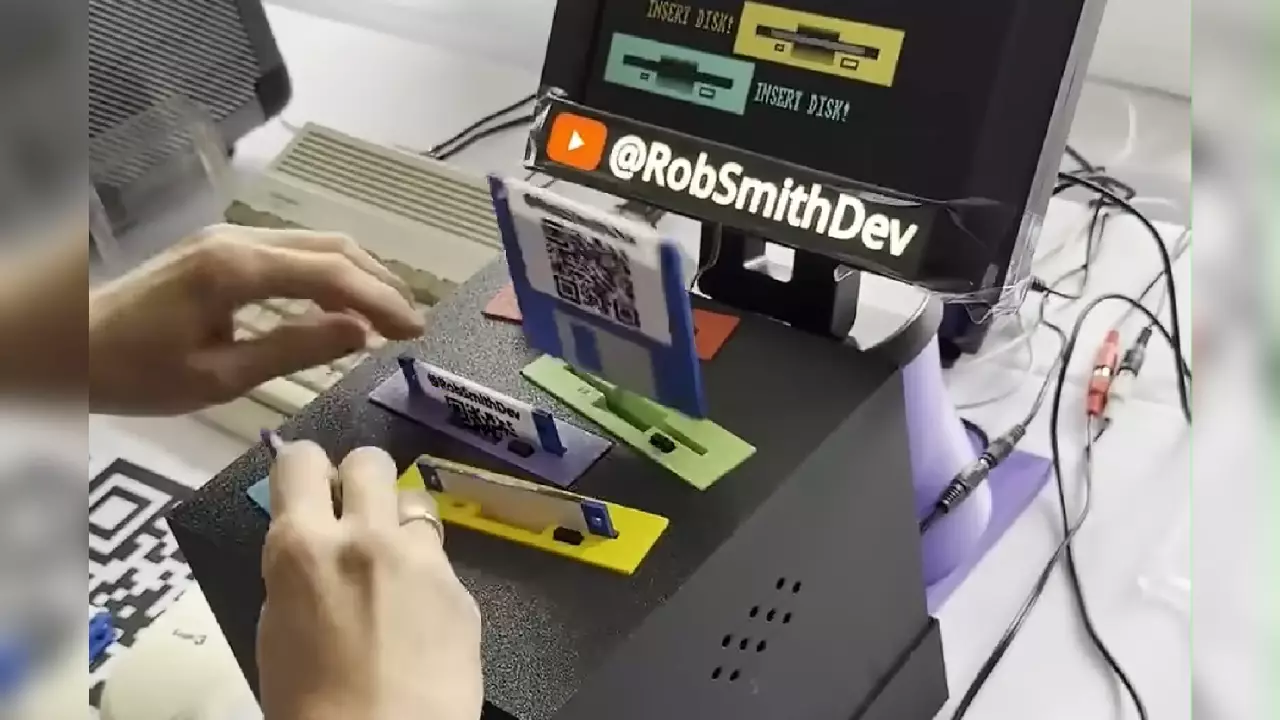In an era dominated by sleek, high-performance gadgets and cutting-edge technology, there exists a countercurrent—a vibrant movement that venerates the charm and ingenuity of vintage hardware. The recent project “DiskFight,” spearheaded by Rob Smith Dev, exemplifies this phenomenon. Despite never having physically interacted with a floppy disk before, Smith’s creative spirit propelled them to combine nostalgia with modern craft. By repurposing an old Amiga-based system, they crafted an interactive game that playfully embodies the essence of retro computing. This act is more than mere obsession; it is an acknowledgment that older tech still holds a captivating allure, capable of inspiring innovative projects that bridge the past and the present.
The decision to build a game that involves inserting floppy disks—an artifact often perceived as obsolete—demonstrates a deliberate desire to celebrate vintage technology. It challenges the notion that retro devices are relics destined for the museum; instead, they are fertile ground for experimentation and creative reinterpretation. Smith’s use of custom linear actuators to simulate the physical interaction with disks introduces a tactile dimension that modern digital interfaces often lack. It’s a reminder that legacy hardware can be invigorated through inventive engineering, resulting in engaging experiences that resonate with tech enthusiasts and newcomers alike.
Reimagining Classic Concepts with a Playful Twist
“DiskFight” defies conventional expectations for retro gaming. Instead of a traditional shoot or platformer, it reimagines the familiar “whack-a-mole” format using floppy disks as the targets, evoking a humorous juxtaposition of old and new. The playfulness lies not only in the design but also in the underlying mechanics—disks are launched out of ports, requiring quick reflexes to press or pick them up and slot them back in. It’s a game that comments on the physicality of vintage tech, turning the nostalgic act of inserting disks into a chaotic, frantic challenge.
What elevates this project is the integration of bespoke hardware components, such as the custom linear actuators, which lend a satisfying physicality to the game. This level of craftsmanship underscores that retro-inspired projects are not just about aesthetics but also about tactile engagement and the artful engineering involved. Smith’s meticulous approach—assembling a 3D-printed enclosure, coding in AMOS, and composing music with retro devices—illustrates the depth of passion involved in reviving old tech as a canvas for artistic expression. These endeavors remind us that retro hardware is an underestimated playground for creative hacking, merging nostalgia with innovation.
Music, Coding, and the Culture of Retro Revival
Integral to the charm of “DiskFight” is its soundtrack—a thirty-second track composed by Hoffman, utilizing old-school music devices to produce a drum and bass track aptly titled “Disk Menace.” The audio component amplifies the game’s emotional impact, with the music gradually intensifying to match the rising chaos on-screen. This synergy of sound and gameplay exemplifies how multimedia elements can elevate a simple concept into an immersive experience.
Moreover, the choice to code in AMOS—a programming language for Amiga computers—adds authenticity and demonstrates respect for vintage gaming development. It serves as a testament that programming on older systems, though often viewed as archaic, can still result in lively, entertaining content. This revival of old-school coding practices, combined with contemporary fabrication techniques, showcases a deep appreciation for the culture of retro gaming and computing. Smith’s project underscores that the appeal of vintage tech is rooted not merely in nostalgia but also in its capacity to inspire fresh, inventive projects that engage new generations.
Beyond Nostalgia: A Call for Creative Reuse
Projects like “DiskFight” highlight a broader philosophical stance: that antiquated technology deserve more than preservation—they deserve reimagination. In a world where planned obsolescence and disposable tech dominate, the act of repurposing obsolete hardware fosters a sustainable, DIY ethos. By transforming an old Amiga system into an interactive game, Smith exemplifies how creative reuse breathes new life into what many might consider junk.
This approach stimulates curiosity, encouraging others to look beyond surface appearances and consider the potential stored within vintage devices. It’s an act of cultural preservation that is deeply personal yet broadly inspiring. Such projects serve as a reminder that technology, no matter its age, is a versatile tool capable of endless reinvention. As more creators explore these avenues, the boundaries between nostalgia and innovation continue to blur, fueling a culture that celebrates ingenuity, sustainability, and heartfelt creativity.
In essence, “DiskFight” is not just a quirky game; it’s a statement. It challenges us to think differently about the tools of the past, to see them as platforms for artistic and technological exploration. Vintage devices have an untapped reservoir of potential—when approached with grit and imagination, they can become the foundation for projects that delight, surprise, and inspire future generations of tinkerers and dreamers alike.

